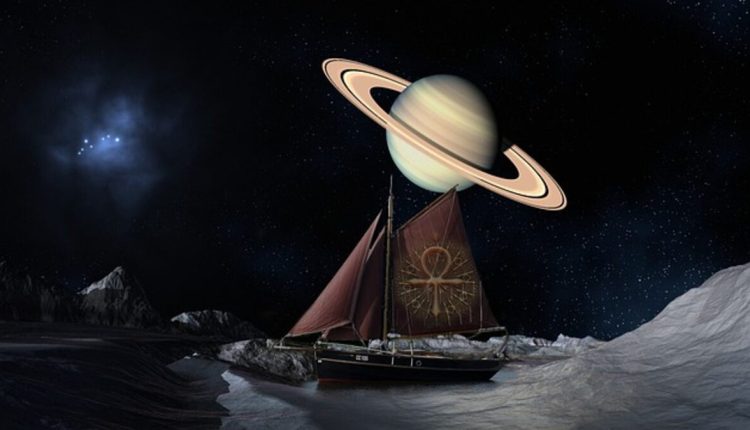What Color Is Saturn?
Saturn is a gas planet whose outer atmosphere consists of hydrogen and helium gas molecules, in addition to trace amounts of ammonia, phosphine, water vapor, and hydrocarbons.
Saturn often appears blue in photographs due to how light is scattered by its seven stunning rings composed of various particles of ice and rock.
The Surface
Saturn has been one of the most well-known images since you were young, perhaps even helping you earn your Scout astronomy badge by studying it through a telescope. Boasting one of the most extensive ring systems in our solar system and stunning colors that catch our eyes, Saturn makes for one of the most visually captivating planets to watch from space.
Saturn is predominantly yellow, though the planet also displays blue, red, and brown tones depending on sunlight scattering across its rings and atmospheric gases. Reddish-brown hues likely result from its chemical makeup containing hydrogen, helium, and trace chemicals such as ammonia phosphine water vapor and hydrocarbons, creating its unique atmosphere.
Saturn’s rings are composed of ice, rock, and dust particles reflecting and scattering light. Some of Saturn’s moons, such as Tethys and Rhea, can have red or orange tints, while Dione appears more grayish-black.
Saturn’s atmosphere consists mainly of hydrogen and helium, with trace amounts of methane, ammonia, and water molecules thrown in for good measure. Its various hues come from storm bands stirring up ammonia ice crystals – an irresistibly beautiful spectacle for scientists to study and gain from! The breathtaking visual display provided by Saturn is one of its vital scientific data points and an invaluable opportunity for study and knowledge exchange.
The Rings
Saturn’s rings can be enjoyed through telescopes or even the naked eye; their spectacular beauty can be witnessed from either spacecraft orbiting overhead. Consisting of an arrangement of ice chunks and rock particles ranging in size from tiny grains to mountain-sized boulders, they encircle their planet with light passing through them, refracting off particles to create distinct hues that define each ring’s coloration.
Ring colors also help scientists gain a better understanding of Saturn. Saturn is mainly composed of hydrogen and helium with some trace amounts of other elements like water vapor and ammonia present; hydrogen exists as molecules rather than individual atoms, altering how sunlight interacts with it – similar to Jupiter, where methane molecules absorb or reflect specific wavelengths.
Recent images captured by Cassini Spacecraft reveal Saturn’s rings as an array of shimmering pinks, grays, and brown hues – one of the most detailed views yet of Saturn’s rings showing their particles made up of ice and dust changing color over time. Unfortunately, what exactly causes such color variation remains a mystery.
The Moons
Saturn appears similar to any other planet in our Solar System except its rings, though its surface features subtle variations. You can easily spot its yellow-tan hue using any telescope or with the naked eye at night, but when studied closely you may detect slight variations in tone that add interest.
As is typical with planets, their colors result from how their atmospheres or surfaces absorb light. Earth is blue because water, forests, and soil absorb blue wavelengths of light, while Mars appears orange due to iron oxide dust particles. Saturn features a similar haze that gives its tan hue but differs because of the abundance of hydrogen and helium and trace amounts of methane, ammonia phosphine, and hydrocarbons present.
These materials give Saturn its slightly bluish hue, likely caused by sunlight scattering off these materials as it passes through its atmosphere and rings. While its northern hemisphere appears serene against this natural color view, its southern hemisphere appears more orange. Scientists are currently working towards understanding these differences between hemispheres as well as Saturn’s rings which contain dust-sized particles reflecting sunlight differently depending on angle or intensity; their colors range from white, tan, or even black depending on how often and intensely sunlight is reflecting off these particles from these rings made up by dust particles reflecting sunlight off these materials reflecting off these rings from passing through their atmosphere and rings.
The Atmosphere
Saturn is the second-largest planet by size and mass, making it easily visible without special astronomy equipment. Named for the Roman god of agriculture Saturn remains poorly understood as we still don’t understand all its unique properties.
From Earth, planet Earth appears as a hazy ball of yellows and browns due to a combination of factors, including its distance from the sun, atmospheric composition, and cloud thickness variation.
Clouds give Earth its distinct golden yellow hue when they are thickest due to their composition consisting of ammonia crystals and water vapor, which absorb blue light while reflecting red and orange ones back to us via sunlight.
Cassini spacecraft has noticed numerous weather patterns on Earth that alter its appearance and hue, such as when rings hide its north pole, its atmosphere takes on a bluish tint; when sunlight passes over its shadow at the south pole, its atmosphere turns yellowish once more. These changes in atmospheric composition could be caused by storms stirring up ammonia crystals and water vapor in their environment.


